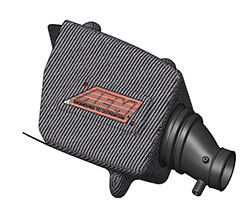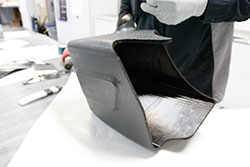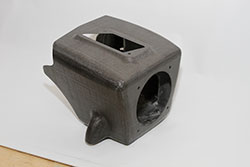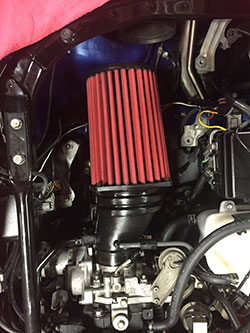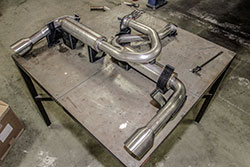Clarion Builds 1991 Acura NSX with Air Intake and Exhaust: A Truely Unique Creation!
- Apr 4, 2016
If you are an automotive enthusiast, then you have probably heard of AEM Induction Systems and the impact they have had on the performance car scene, especially in the import tuner world. When Clarion Builds presented AEM with the opportunity to participate in a custom build for such an iconic foreign car, they jumped at the chance to apply their import expertise to a Japanese supercar from the era that birthed the performance movement that gave AEM its foothold in the performance aftermarket. AEM is making strategic moves to be THE name in import and small luxury car performance, and this build has given them another occasion to show off what they can do. AEM’s intake design for the Clarion NSX has focused on making something exclusive for this unique, one-off car. The NSX has the performance potential to increase the output of the NSX’s supercharged newer-model V6, while keeping weight low and aesthetically harmonizing with the design language of the original geometry of the car. Until this article was released, AEM’s most recent public announcement on the status of the Clarion Builds NSX hinted that carbon fiber would be a key ingredient for the air intake system, and AEM is well-on-the-way to delivering on that intent. They are doing so using a technologically advanced process too. The AEM design team leveraged their advanced measurement and 3D printing tools and expertise to “grow” a mold used to form the carbon fiber airbox (the function of which is to ensure that the engine is breathing cool, dense, power-efficient air). Carbon fiber fabric was layered onto the surface of the mold and cured/solidified as in conventional composite fabrication, but once that was finished, the mold was then dissolved away. This process produced an organically-shaped part that could not have been created any other way without requiring expensive, time-consuming multi-part molds that would leave undesirable mold parting lines. After some surface prep and clear-coat, this air box will be absolutely stunning.
Arguably, the most important part of any performance intake system is its air filter, and here again, AEM has been able to quickly and cost-effectively deliver a design using 3D printing (aka additive manufacturing) technology. Not only was this custom filter design brought to life very quickly, but it was computer-optimized to augment airflow and incorporate nearly all of the components of a traditional intake system in one piece! That includes the ideally sized DryFlow filtration media, molded intake tube, mounting strategy, engine movement accommodation, and clean crankcase ventilation orifice.
When Clarion reviewed the design, witnessed AEM’s skill in cost-effectively crafting bespoke breathing systems, and learned of AEM’s exhaust capabilities, they offered to AEM the opportunity to design and fabricate a custom exhaust system for the NSX. AEM was able to employ the same tools and expertise to design an exhaust system using the same philosophy focused on lightweight performance enhancement with a design language consistent with the rest of the car. 3D printed fixtures were arranged on a grid table to locate the system components. All the team needed to do was provide 3D routing geometry to their CNC tube benders and determine which system components to use. They chose two high-flowing 304 stainless steel mufflers originally designed for Hondas from the era of the original NSX. An H-pipe section to equalize backpressure and split the muffling task between them connects the 304 stainless steel tubing before the mufflers. The team was careful to keep the total length of the system down to keep weight and backpressure low while also visually balancing the system. Every member of the AEM team is looking forward to experiencing how the symmetrical look of the system compliments the performance and sound of the supercar. Expect that it will be engaging to most of the senses. Keep coming back to the AEM News feed for more on the Clarion Builds 1991 Acura NSX with bespoke AEM products including coverage on the final product. Who knows? Maybe you’ll be inspired to approach AEM with a custom build of your own… |
|||

